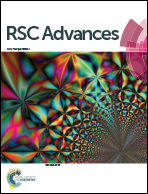Preparation and properties of lambda-cyhalothrin/polyurethane drug-loaded nanoemulsions
Abstract
Conventional pesticide formulations are usually used inefficiently due to loss and poor foliage adhesion, which results in a large waste of resources and serious environmental pollution. In order to prolong the foliar pesticide retention and release time, using biodegradable castor-oil based polyurethane (CO-PU) as a carrier, lambda-cyhalothrin/CO-PU (LC/CO-PU) nanoemulsions were prepared via an in situ soap-free phase inverse emulsification technique and their properties were investigated. Results showed that the LC/CO-PU nanoemulsions had a good water dispersion and the drug-loaded nanoparticles (NPs) were uniform spheres with diameters of less than 80 nm. The LC physically encapsulated in the CO-PU carrier was in an amorphous state, and the maximum of the LC loading capacity was around 40 wt% with a high encapsulation efficiency of more than 85%. Compared with commercial LC formulations, the LC/CO-PU nanoemulsions exhibited a sustained and controlled-release property, which could be adjusted by the LC loading capacity and temperature. The foliage adhesion of the LC/CO-PU nanoemulsions was much better than that of the commercial LC formulations due to the low surface tension, larger chain mobility of the LC/CO-PU systems as well as hydrogen-bond interactions between the polyurethane and foliar surface, which was of great significance to achieve the efficient use of pesticides.



 Please wait while we load your content...
Please wait while we load your content...